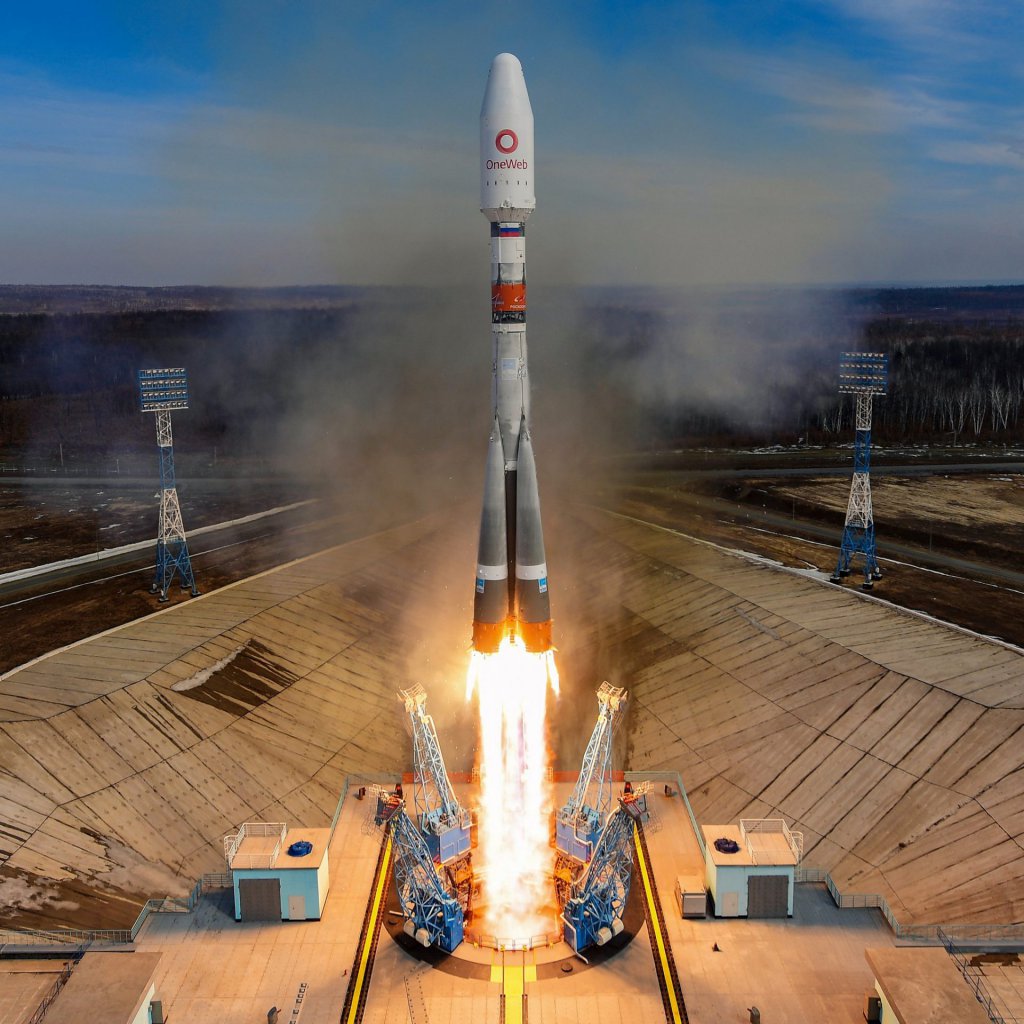Arianespace, through its Russian joint venture Starsem, has launched a Soyuz 2-1b/Fregat vehicle carrying 36 OneWeb satellites into low Earth orbit (LEO). The mission lifted off at 0247 GMT on 25 March 2021 from the Vostochny Cosmodrome in Siberia, Russia, and brings OneWeb’s in-orbit satellite tally to 146.
The Fregat M upper stage was dropped off into a 450 km orbit inclined at 87.4 degrees. From there it performed nine satellite deployments to spread them out over the orbit. Once ready, the spacecraft will use their own propulsion systems to raise themselves to their 1,200 km operational altitude.
This is the second launch – following one in December 2020 – in OneWeb’s “Five to 50” initiative. The company plans to expand its constellation quickly to allow complete coverage over 50 degrees latitude by mid-2021. Providing this arctic service by the end of the year is an important milestone and, coupled with an aggressive launch schedule, paves the way to providing a global service next year.

The Soyuz 2-1b/Fregat rocket carrying 36 OneWeb satellites to LEO. Courtesy: Roscosmos, Space Center Vostochny, and TsENKi
The UK government’s £400 million (US$500 million) investment in the OneWeb constellation (along with its Indian co-investor Bharti) was seen as a gamble, but there are signs this is paying off, making it a major competitor to the SpaceX Starlink constellation.
OneWeb has signed an MoU (Memorandum of Understanding) with the US Department of Defense (DoD) satellite communications application specialist, TrustComm, to eventually provide the US military with a data communications service. It would focus initially on northern latitudes, which are difficult to reach using GEO (Geostationary Earth Orbit) satellites. Meanwhile, research is continuing into the possibility of offering a navigation service via the OneWeb constellation similar to the MEO (Medium Earth Orbit) GPS or Galileo systems.
David Todd contributed to this story.





